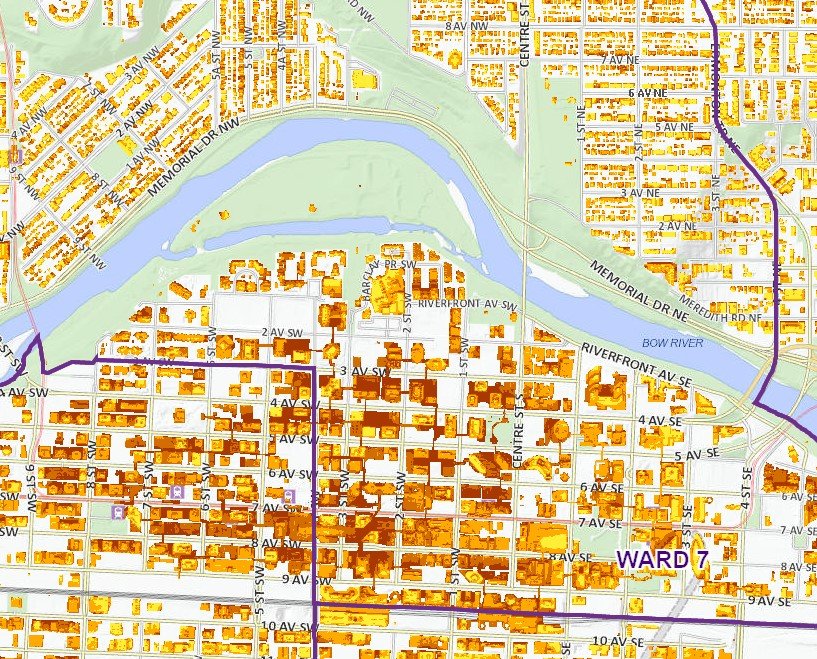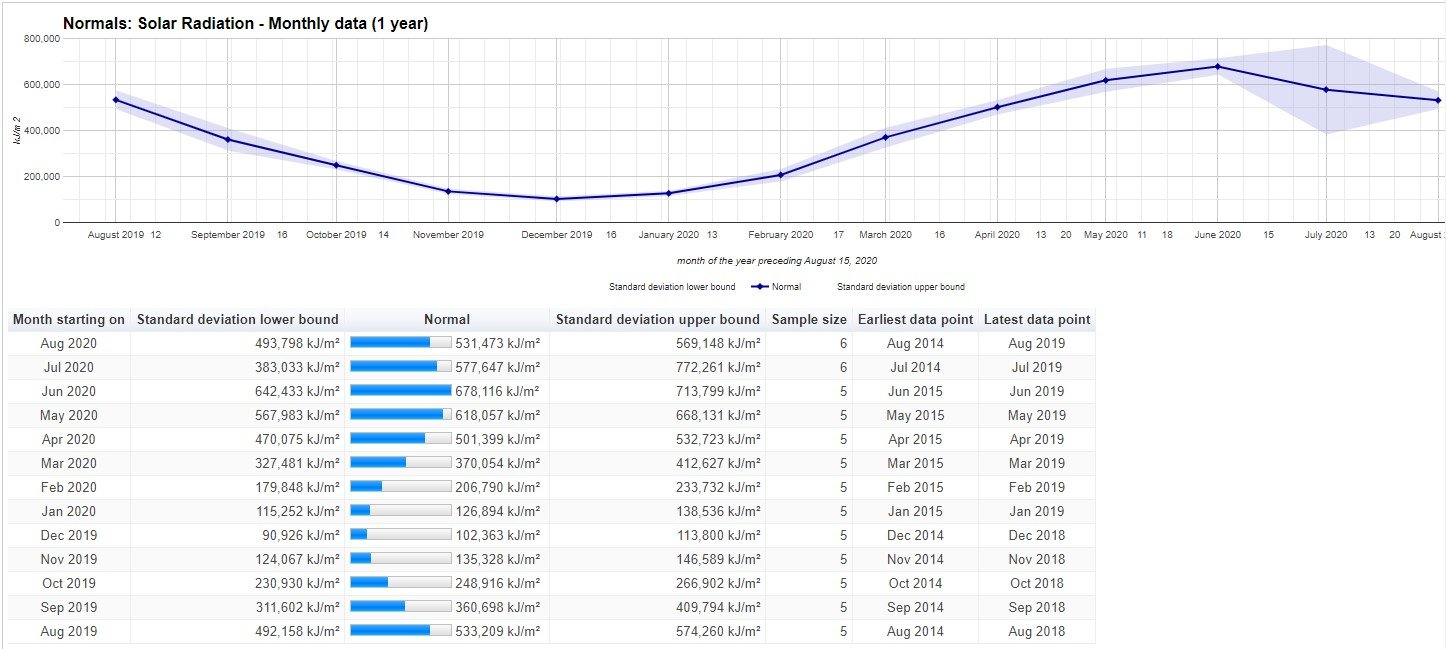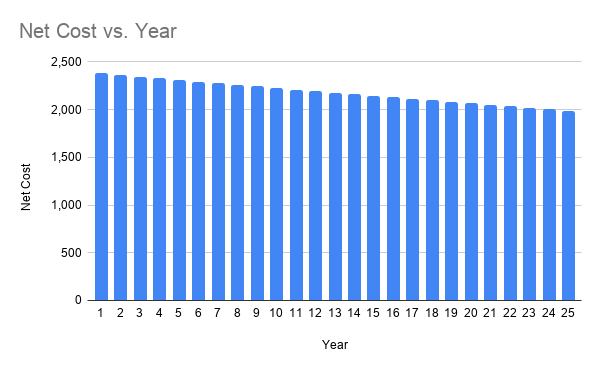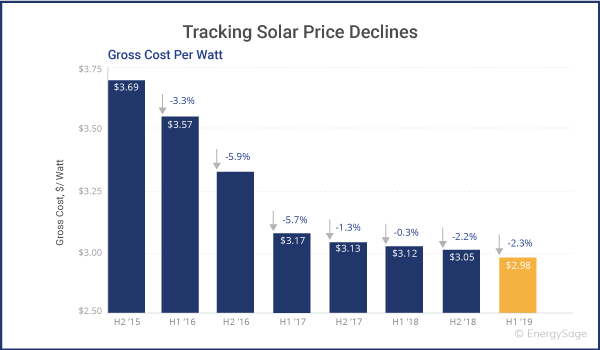JayMan is the first major builder in Alberta that has fully endorsed solar. Kudos to them for taking a big step. And it's gotten lots of press coverage, along with all the sales people in the showhomes pushing it as a feature.

But is it worth it? And, how do we measure what something is worth?
- Is it just financial returns
- Are you willing to buy for the environment alone (ignoring the disposal and manufacturing of the panels)
- Or is it the self sufficiency aspect of knowing that you are WHOLLY reliant on the grid / others?
In terms of the last point, the self sufficiency, I like being self sufficient. But in Alberta, even the biggest installation that could fit on my roof is NOT going to enable me to go off-grid in December. We just don't get enough hours of sunshine. So, we have to accept certain limitations, including that it's tough to be wholly self reliant in terms of power. Too bad, as the BIGGEST part of my power bill is the "fixed" charges (Admin, Distribution, etc), with the actual power use being the smallest component.
The issue of the environment is highly charged and politicized. However, if you truly believe in solar and the benefits of it, and want to save the environment, I think it would be tough to argue that the best use of your money is on YOUR roof. Maybe invest in a solar power company in sunny Nevada? Or California. Or Arizona. Or Mexico. Someplace where they get more sun, year round. And, ignoring the finer points of solar panel manufacturing and eventual disposal.
This leaves financial. And here numbers can be run.
Alberta has one of the LOWEST prices for electricity. Usually between 5 - 7 cents / kilowatt hour. Just to put this into context, this would be running close to 100 of the newer LED light bulbs for 1 hour for 5c. Lights are no longer our biggest energy use.
After switching to LED / CFL, our easiest power savings have been already taken. For most people, our biggest electricity draws are our electric clothes dryers, electric stoves, and our furnaces (takes a lot of power to push the air around your home). These items are tougher to change or improve upon. Which leads some to then think of DECREASING their electricity by making their own.
Let's look at how much sun we actually get. First, the good parts.
Alberta has 320 days of sun a year. 2340 hours of sunshine a year. This is being touted by companies wanting to install solar for you, including GridWorksEnergy. I usually take things from anyone wanting to sell me something with a grain of salt.
Also, the city of Calgary has made a handy map to help you evaluate your own individual solar potential:

Now, for the bad parts.
And, we start with how much actual solar radiation we get. There is a difference between an hour of sunshine in December and in June. Or in Calgary or in Las Vegas. Here is the solar radiation:

https://calgary.weatherstats.ca/charts/normal_solar_radiation-monthly.html
Total yearly solar radiation per sq m is 4.46 million kilojoules. Sounds like a lot. But I don't know any that regularly quote in joules. But, 1 kj = .2777 Wh. So, about 1.2 million watt hours. But we quote Enmax and other power companies in kilowatt. After conversion, each sq m of our province gets 1238 kilowatt hour of power a year.
Next question, how efficient are solar power cells? Turns out most solar cells are between 15 - 20% efficient, with some high performance cells getting up to 23% (without going exoctic. The cells on the space station are a COMPLETELY different beast). Let's give the cell the benefit of the doubt, and say 20% (For a more indepth read of solar cell manufacturers and efficiency, read https://news.energysage.com/what-are-the-most-efficient-solar-panels-on-the-market/. We were generous at 20%). So, potential each sq m of Alberta, if covered by solar cells (and no shade, no snow, no other homes blocking, etc) could create 247 kilowatt hours.
Fantastic. Still sounds great. How much would Enmax charge for that much power? Well, at 5 - 7 c / kilowatt hour, between $12.40 and $17.30 / year; averaging at close to $15 (we'll round up).
Amazon has a package of 6 solar cells + associated hardware for $2400. Each of their panels are 0.98 sq m (we'll round up to 1 m, and assume no bezels / casing).
So, this kit, costing $2400 will save you $15 / panel, 6 panel, for $90 savings / year. Assuming no interest, and no cost to install the panels / inverter / permits, it will take you 26 years 8 months to pay it off.
But, wait, it gets worse. First, there is interest. Second, solar panels efficiency DECREASES over time. (Let's use magic to assume installation costs are ZERO). In the BEST year, year #1, using 3% interest rate, you'll pay $72 on the system, and get $90 of power. You have made $18. Takes YEARS to pay of $2400 $18 at a time.
Let's give the benefit of doubt to the interest rates. Let's assume rates stay REALLY low over the next several decades. Say 3% for the next 4 or 5 decades (anyone remember 18% mortgage rates?). If so, here is what the first 25 years of ownership looks like:

For those truly wondering, at the rate it's going, it won't be fully repaid for until 2943 (yes, another 900+ years). At year 100, interest had fallen to $34 / a, but the power produced had fallen to $43, given a benefit of only $9. (This doesn't account for maintenance or that the inverters should replaced roughly every decade).
If you want solar TODAY (2020), you might be able to get some rebates from the government. Maybe. But that only changes who is paying for the solar, from the individual to the state (that then needs to tax the rest of us more).
Now, I am VERY hopeful for the future. Every year, as solar cells are getting better:
![]()
and the prices continue to fall:

In time, it will make sense to install solar on our own roof. Hopefully coinciding when my roof is up for replacement (no use putting solar on an old roof, and removing the following year). I am going to re-run the numbers in about 5 years. I hope I have better news to report then.
In the end, I am hopeful for the future, but cognizant that SOLAR not ECONOMICALLY ready for me. Not yet.
Posted by Matthew Dekort on
Leave A Comment